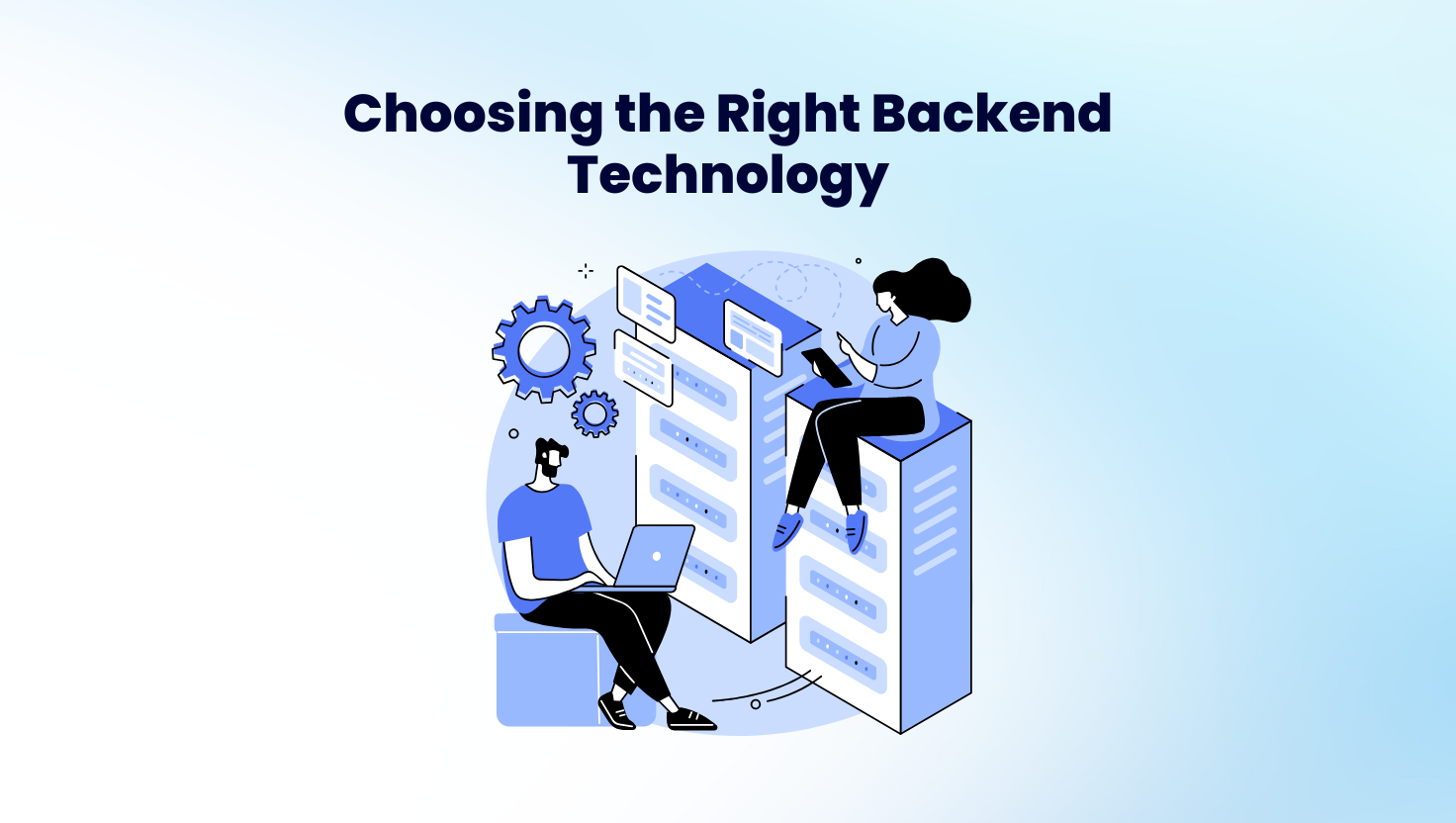
21 Feb How to Choose the Right Backend Technology for Your Business Website
A strong backend infrastructure is the foundation of any successful website. It determines how data is processed, stored, and retrieved, ensuring that your website operates efficiently and securely. Choosing the right backend technology is crucial for performance, scalability, and security, making it an important decision for any business.
With numerous programming languages, frameworks, and architectures available, it can be overwhelming to determine which one best suits your needs. This guide explores key factors to consider, comparisons of backend technologies, and recommendations for different business types.
What is Backend Development?
Backend development refers to the server-side of a website, where all the logic, data management, and application functionality occur behind the scenes. Unlike the frontend (which users interact with directly), the backend is responsible for:
- Processing user requests.
- Managing databases and storing information.
- Authenticating and authorizing users.
- Handling server communications and APIs.
- Ensuring data security and encryption.
Without a reliable backend, even the most beautifully designed website will not function properly.
Types of Backend Technologies
There are several backend programming languages and frameworks, each with unique benefits. Here’s a breakdown of some of the most popular choices:
1. Programming Languages for Backend Development
Each backend programming language has its strengths:
- Python – Easy to learn, widely used in AI, data science, and web development (Django, Flask).
- PHP – A dominant language for web development, widely used in CMS platforms (Laravel, WordPress).
- JavaScript (Node.js) – Highly scalable and fast, commonly used for APIs and microservices (Express.js, NestJS).
- Java – Secure, stable, and ideal for enterprise applications (Spring Boot).
- C# (.NET) – Best for Microsoft-based applications and enterprise systems (ASP.NET Core).
- Go (Golang) – High-performance, excellent for cloud applications and microservices.
2. Backend Frameworks
Frameworks simplify development by providing pre-built components:
- Django (Python) – Secure and powerful, great for startups and enterprises.
- Laravel (PHP) – Developer-friendly, suitable for e-commerce and CMS.
- Spring Boot (Java) – Scalable and robust for enterprise software.
- Express.js (Node.js) – Fast, lightweight, and perfect for API development.
- Ruby on Rails (Ruby) – Efficient and beginner-friendly for web apps.
Key Factors to Consider When Choosing a Backend Technology
1. Scalability and Performance
If you anticipate business growth, choose a backend that can handle increased traffic and larger datasets.
- Best for High-Traffic Websites: Node.js, Go, Elixir.
- Best for Enterprise Applications: Java (Spring Boot), .NET Core.
2. Security and Data Protection
Security is crucial for protecting user data, payment information, and business intelligence. Your backend should include:
- Data encryption and hashing (e.g., AES, bcrypt).
- Authentication and authorization (e.g., JWT, OAuth 2.0).
- Protection against attacks (e.g., SQL Injection, Cross-Site Scripting).
Best choices for security: Django, Spring Boot, ASP.NET Core.
3. Speed of Development and Maintenance
If you need rapid development, opt for backend frameworks with pre-built components to save time.
- Best for Startups & Quick Development: Laravel, Ruby on Rails.
- Best for Maintainability: Django, Spring Boot.
4. Integration with APIs and Services
Your backend should easily connect to third-party services and cloud platforms.
- Best for API Development: Node.js (Express.js), Python (FastAPI).
- Best for Cloud-Based Solutions: Firebase, AWS Lambda.
5. Cost Considerations
Budget constraints play a major role in technology selection.
- Cost-Effective Solutions: PHP (Laravel), Python (Django), Node.js.
- Enterprise-Level Solutions (Higher Cost): Java (Spring Boot), .NET Core.
Backend Technology Recommendations Based on Business Needs

Backend Architecture Options
1. Monolithic vs. Microservices
- Monolithic Architecture – The entire application is built as a single unit. Simple but harder to scale.
- Microservices Architecture – The application is split into small, independent services. More scalable but complex.
2. Server-Based vs. Serverless
- Server-Based (Traditional Hosting) – Requires dedicated servers and maintenance.
- Serverless (Cloud-Based) – Uses platforms like AWS Lambda, reducing infrastructure costs.
Migrating to a New Backend Technology
If your current backend does not meet performance or scalability needs, transitioning to a newer technology can improve efficiency. Steps include:
1. Analyze Current Performance – Identify limitations in speed, security, or maintenance.
2. Define Business Goals – Choose a backend that aligns with your long-term vision.
3. Plan the Migration – Minimize downtime and ensure data integrity.
4. Test and Optimize – Run security tests, API checks, and performance evaluations.
Common Mistakes to Avoid When Choosing a Backend
- Ignoring Scalability – A system that works for 100 users may fail at 100,000 users.
- Overlooking Security – Weak encryption and authentication can lead to data breaches.
- Choosing Based on Popularity, Not Suitability – The best backend is the one that fits your business, not just the trending technology.
How PT. KDN Can Help You Build the Right Backend
Selecting the right backend technology is challenging, but PT. KDN can simplify the process. Our experienced developers analyze your business requirements and create a backend solution tailored to your needs. Whether you require a secure enterprise system, an e-commerce platform, or a cloud-based API, we deliver scalable, high-performance backend technologies.
With PT KDN, you don’t have to worry about technical complexities—we handle everything, allowing you to focus on growing your business. Let’s build a robust and future-proof backend for your website today!


Sorry, the comment form is closed at this time.